|
 'Odd Couple' Binary Makes Dual Gamma-ray Flares
'Odd Couple' Binary Makes Dual Gamma-ray FlaresGreenbelt MD (SPX) Jul 01, 2011 In December 2010, a pair of mismatched stars in the southern constellation Crux whisked past each other at a distance closer than Venus orbits the sun. The system possesses a so-far unique blend of a hot and massive star with a compact fast-spinning pulsar. The pair's closest encounters occur every 3.4 years and each is marked by a sharp increase in gamma rays, the most extreme form of light. The unique combination of stars, the long wait between close approaches, and periods of intense gamma-ray ... read more |
. |
|
| Buy Advertising | Media Advertising Kit | Editorial & Other Enquiries | Privacy statement |
|
Free Newsletters - Delivered Daily Via Email - Space - War - Terra - Energy |
| .. |
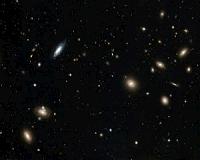 Astronomers reveal a cosmic 'axis of evil' Astronomers are puzzled by the announcement that the masses of the largest objects in the Universe appear to depend on which method is used to weigh them. The new work was presented at a specialist ... more | .. |
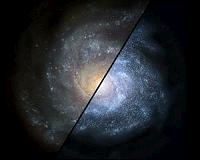 NASA's Spitzer Finds Distant Galaxies Grazed on Gas Galaxies once thought of as voracious tigers are more like grazing cows, according to a new study using NASA's Spitzer Space Telescope. Astronomers have discovered that galaxies in the distant, earl ... more | .. |
 Making a Spectacle of Star Formation in Orion Looking like a pair of eyeglasses only a rock star would wear, this nebula brings into focus a murky region of star formation. NASA's Spitzer Space Telescope exposes the depths of this dusty nebula ... more | .. | ||
| .. |
 Studying solar wind NASA's Genesis mission crash-landed back on Earth in 2004. The spacecraft spent more than two years in orbit around the sun collecting solar wind, which consists of charged particles, on various ult ... more | .. |
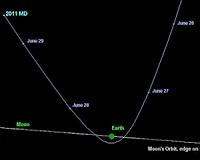 Richard Binzel on near-Earth asteroids On Monday at approximately 1:14 p.m. EDT, an asteroid named 2011 MD will pass only 7,500 miles above Earth's surface - a close call in astronomical terms. The asteroid was discovered only last week ... more | .. |
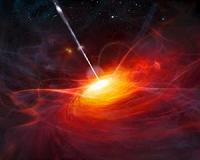 Most Distant Quasar Found A team of European astronomers has used ESO's Very Large Telescope and a host of other telescopes to discover and study the most distant quasar found to date. This brilliant beacon, powered by a bla ... more | .. |
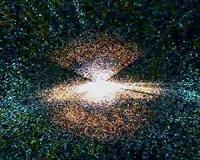 Pitt Researchers Tackle Flood of Space Data In the past 15 years, the wealth of data available to astronomers through new and larger digital-optimized telescopes has revolutionized our understanding of the Universe's inner workings. However, ... more |
|
Free Newsletters - Delivered Daily Via Email - Space - War - Terra - Energy |
| . | . |
 Arrival of US aircraft carrier fuels Venezuelan fears of attack
Arrival of US aircraft carrier fuels Venezuelan fears of attack Russia offers US nuclear talks in bid to ease tensions
Russia offers US nuclear talks in bid to ease tensions US-China tensions weigh on Lisbon's Web Summit
US-China tensions weigh on Lisbon's Web Summit | .. |
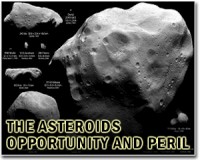 Study rates countries' risk from asteroid A study by British researchers has identified countries that would be worst affected in the event of a catastrophic asteroid strike on Earth. ... more | .. |
 Bright galaxy sheds light on early Universe Astronomers said on Wednesday they had snared light from a bright, ancient galaxy with a super-massive black hole at its core, a finding that would help explain aspects of the young Universe. ... more | .. |
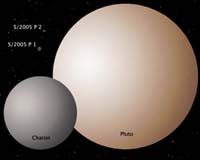 Williams and MIT Astronomers Observe Pluto and its Moons A Williams College team of astronomers, headed by Bryce Babcock and Jay Pasachoff, have been in Hawaii, near Honolulu, to observe a rare double-double event about Pluto. On June 23rd, they observed ... more | .. |
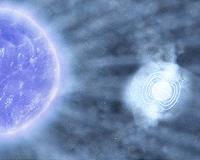 Neutron star bites off more than it can chew ESA's XMM-Newton space observatory has watched a faint star flare up at X-ray wavelengths to almost 10 000 times its normal brightness. Astronomers believe the outburst was caused by the star trying ... more |
| .. |
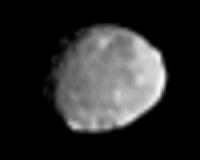 Dawn Journal - June 2011 Vesta beckons, and Dawn responds. Now more than halfway through its approach to Vesta, Dawn continues creeping up on the destination it has been pursuing since it began its interplanetary travels. T ... more | .. |
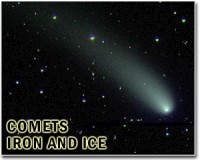 New comet could put on 2013 show U.S. scientists say a newly discovered comet could provide an astronomical spectacle when it swings through the solar system in 2013. ... more | .. |
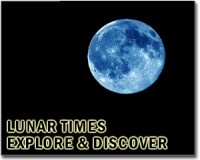 NASA puts space probe into lunar orbit NASA says the first of two spacecraft that will study the moon is safely in its lunar orbit after successful maneuvers guided by flight engineers in California. ... more | .. |
 Scientists shed light on the private lives of electrons A Princeton researcher and his international collaborators have used lasers to peek into the complex relationship between a single electron and its environment, a breakthrough that could aid the dev ... more |
| Buy Advertising | Media Advertising Kit | Editorial & Other Enquiries | Privacy statement |
|
Free Newsletters - Delivered Daily Via Email - Space - War - Terra - Energy |
 Understanding the nuances of human-like intelligence
Understanding the nuances of human-like intelligence Advanced air filter could enable building vents to capture carbon and reduce energy use
Advanced air filter could enable building vents to capture carbon and reduce energy use Ancient wallaby ancestor reveals evolutionary leap for kangaroos
Ancient wallaby ancestor reveals evolutionary leap for kangaroos | .. |
 Microsoft takes Office into the 'cloud' Microsoft took its Office software into the Internet "cloud" on Tuesday, moving the suite of popular business tools online amid budding competition from Google's Web-based products. ... more | .. |
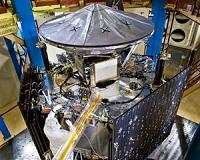 Juno Blanket Check As the Juno spacecraft is elevated by a rotation fixture, a technician at Astrotech's payload processing facility in Titusville, Fla., examines the installation of blankets on the aft deck. The imag ... more | .. |
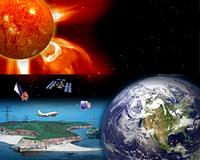 Getting Ready for the Next Big Solar Storm In Sept. 1859, on the eve of a below-average solar cycle, the sun unleashed one of the most powerful storms in centuries. The underlying flare was so unusual, researchers still aren't sure how to ca ... more | .. |
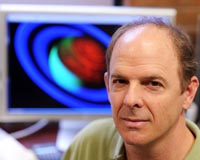 Moon Geyser Finding Significant, UCF Scientist Says A team of international astronomers this week reported that a salt-water reservoir is the likely source of geyser plumes observed on Enceladus - one of Saturn's moons. Joshua Colwell, a Univer ... more |
| .. |
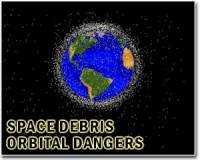 Space debris a growing problem A scare triggered by orbital debris that on Tuesday came within a couple of hundred metres (yards) of the International Space Station (ISS) sheds light on an acutely worsening problem. ... more | .. |
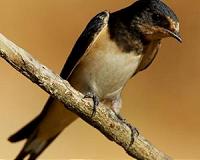 Breathing Through the Eyes Say what you will about bird brains, but our feathered friends sure have us - and all the other animals on the planet - beat in the vision department, and that has a bit to do with how their brains ... more | .. |
 Debris narrowly misses International Space Station A piece of space debris narrowly missed the International Space Station on Tuesday in a rare incident that forced the six-member crew to scramble to their rescue craft, space agency officials said. ... more | .. |
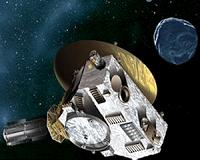 Volunteer Star Gazers Needed for NASA Mission Calling all amateur star gazers: Scientists need your help. A team from Southern Illinois University in Edwardsville has developed the website IceHunters, which challenges the public to discover pot ... more |
| Buy Advertising | Media Advertising Kit | Editorial & Other Enquiries | Privacy statement |
|
Free Newsletters - Delivered Daily Via Email - Space - War - Terra - Energy |
 Collaborative Agreement to Advance Solar Arrays for Satellite Power Systems
Collaborative Agreement to Advance Solar Arrays for Satellite Power Systems Diraq progresses to new stage in DARPA drive for practical quantum computers
Diraq progresses to new stage in DARPA drive for practical quantum computers FSU physicists discover new state of matter in electrons, platform to study quantum phenomena
FSU physicists discover new state of matter in electrons, platform to study quantum phenomena | .. |
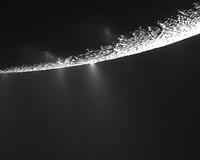 Tasting the Ocean Spray of Enceladus NASA's Cassini spacecraft has discovered the best evidence yet for a large-scale saltwater reservoir beneath the icy crust of Saturn's moon Enceladus. The data came from the spacecraft's direct anal ... more | .. |
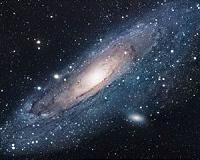 How to Keep Lonely Exoplanets Snug - Just Add Dark Matter! Dark matter is perhaps not the first thing that comes to mind when considering how life can be supported on another planet, but to Dan Hooper and Jason Steffen of the Fermilab Center for Particle As ... more | .. |
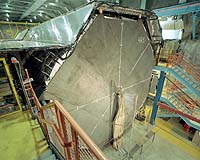 Fermilab experiment weighs in on neutrino mystery Scientists of the MINOS experiment at the Department of Energy's Fermi National Accelerator Laboratory announced Friday the results from a search for a rare phenomenon, the transformation of muon ne ... more | .. |
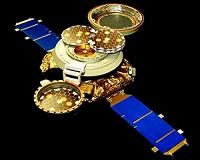 Solar wind samples give insight into birth of solar system Two papers in this week's issue of Science report the first oxygen and nitrogen isotopic measurements of the Sun, demonstrating that they are very different from the same elements on Earth. These re ... more |
| .. |
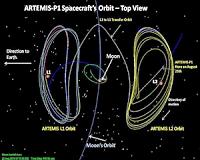 ARTEMIS Spacecraft Prepare for Lunar Orbit They've almost arrived. It took one and a half years, over 90 orbit maneuvers, and - wonderfully - many gravitational boosts and only the barest bit of fuel to move two spacecraft from their orbit a ... more | .. |
 Dawn Nears Start of Year-Long Stay at Giant Asteroid NASA's Dawn spacecraft is on track to begin the first extended visit to a large asteroid. The mission expects to go into orbit around Vesta on July 16 and begin gathering science data in early Augus ... more | .. |
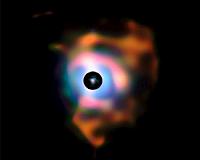 The Flames of Betelgeuse Using the VISIR instrument on ESO's Very Large Telescope (VLT), astronomers have imaged a complex and bright nebula around the supergiant star Betelgeuse in greater detail than ever before. This str ... more | .. |
 NASA Mission Suggests Sun and Planets Constructed Differently Researchers analyzing samples returned by NASA's 2004 Genesis mission have discovered that our sun and its inner planets may have formed differently than previously thought. Data revealed difference ... more |
| Previous Issues | Jun 30 | Jun 29 | Jun 28 | Jun 27 | Jun 24 |
| The contents herein, unless otherwise known to be public domain, are Copyright 1995-2011 - SpaceDaily. AFP and UPI Wire Stories are copyright Agence France-Presse and United Press International. ESA Portal Reports are copyright European Space Agency. All NASA sourced material is public domain. Additional copyrights may apply in whole or part to other bona fide parties. Advertising does not imply endorsement, agreement or approval of any opinions, statements or information provided by SpaceDaily on any web page published or hosted by SpaceDaily. Privacy statement |
|
Free Newsletters - Delivered Daily Via Email - Space - War - Terra - Energy |
| Buy Advertising | Media Advertising Kit | Editorial & Other Enquiries | Privacy statement |